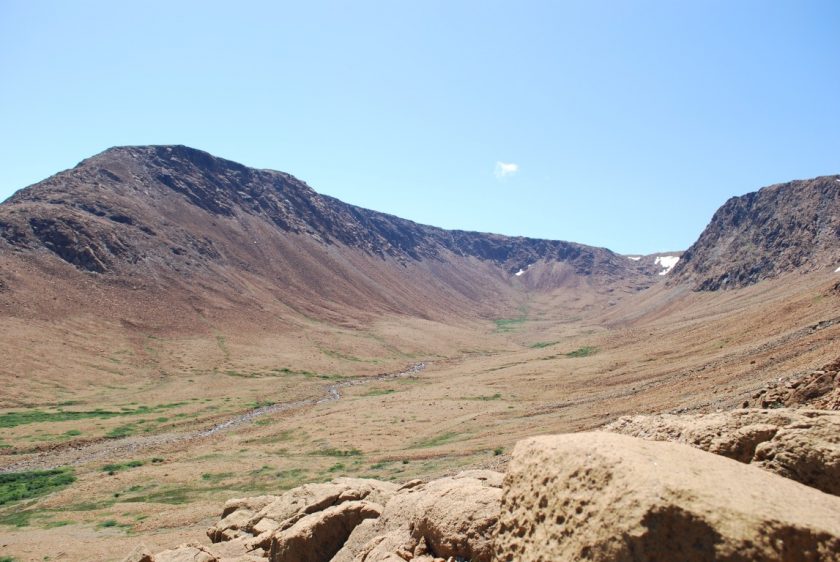Water in the Earth’s Crust
November 20, 2017

A geothermometer may sound like a mercury laden probe you stick in a rock, but in reality it’s a feature of the rock itself: a mineral signature scientists use to understand the cooling history of the rock in question.
Postdoctoral fellow Nick Dygert applied a new geothermometry analysis technique to rock that formed in the Earth’s mantle and made a discovery that helps explain the crust formation process: water probably penetrates deep into the crust and upper mantle at mid-ocean spreading zones, the places where new crust is made.
The finding adds evidence to one side of a longstanding debate on how magma from the Earth’s mantle cools to form the lower layers of crust. The research was published in May 2017 in the print edition of Earth and Planetary Science Letters. Collaborators include Peter Kelemen of Columbia University and Yan Liang of Brown University.
To learn more about the conditions under which magma turns into crustal rock, Dygert and his collaborators examined rock samples that were part of the Earth’s mantle 100 million years ago, but are now part of a canyon in Oman.
“One can effectively walk down 20 kilometers in the Earth’s interior,” said Kelemen.
“This allows scientists to access rocks that formed far below the seafloor which are not available for study.”
The team turned to geothermometers to calculate temperatures and reveal the cooling history of the rock, including a new geothermometer developed by Liang, which records the maximum
temperature a rock attained before it cooled.
The temperatures recorded in the rocks show that the lower crust and uppermost mantle cooled and solidified almost instantly, while the deeper mantle cooled more gradually. The temperature change is indicative of water circulating through the crust and uppermost mantle beneath mid-ocean spreading centers, and the heat from deeper portions of the mantle being dissipated through contact with the cooler upper rocks.
The research was supported by the Jackson School of Geosciences, the National Science Foundation, the Alfred P. Sloan Foundation and an International Continental Drilling Program grant.
Back to the Newsletter